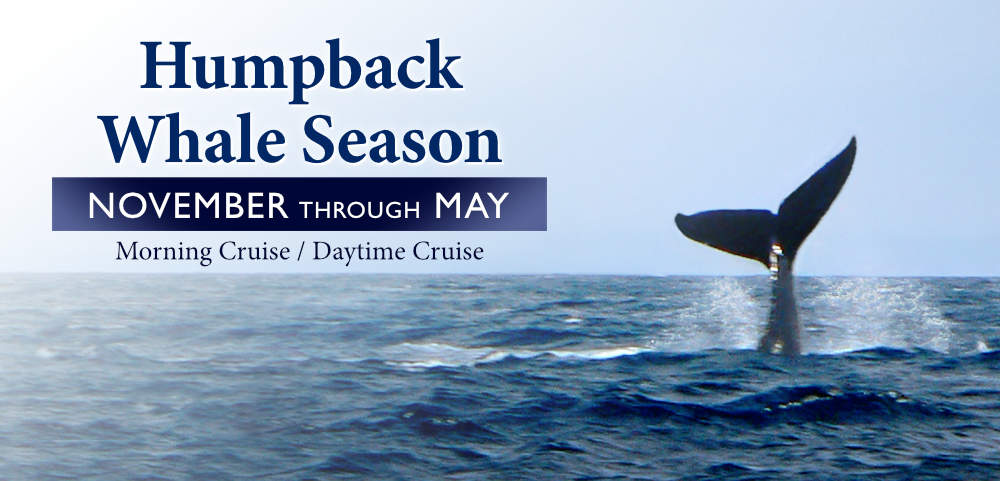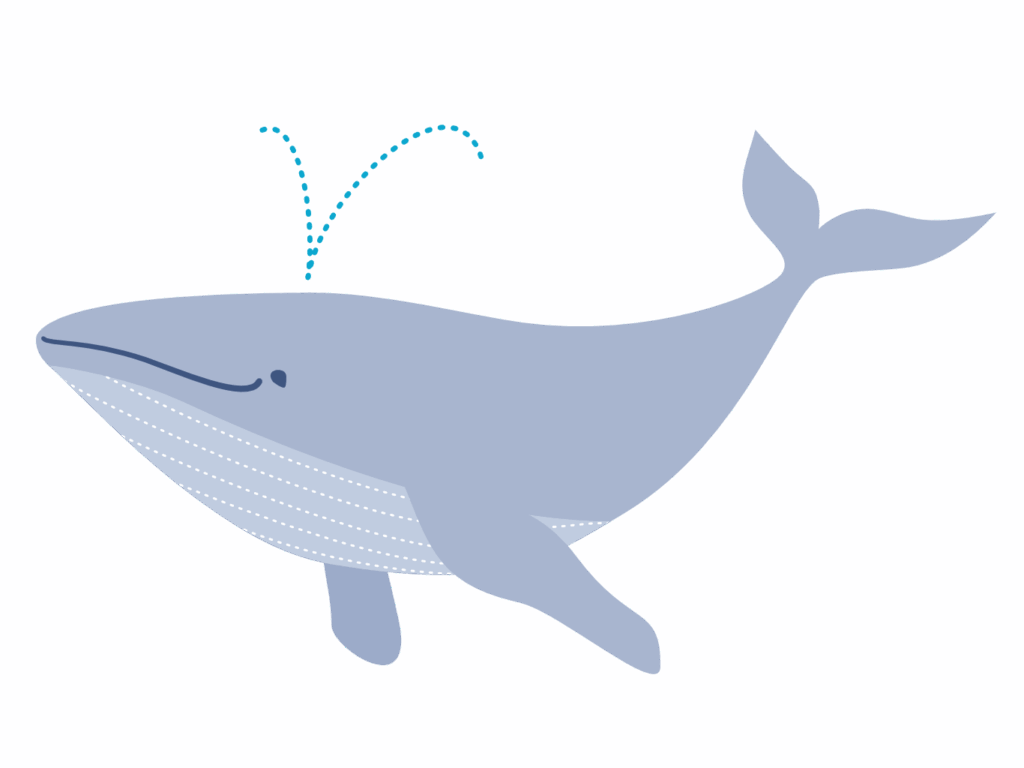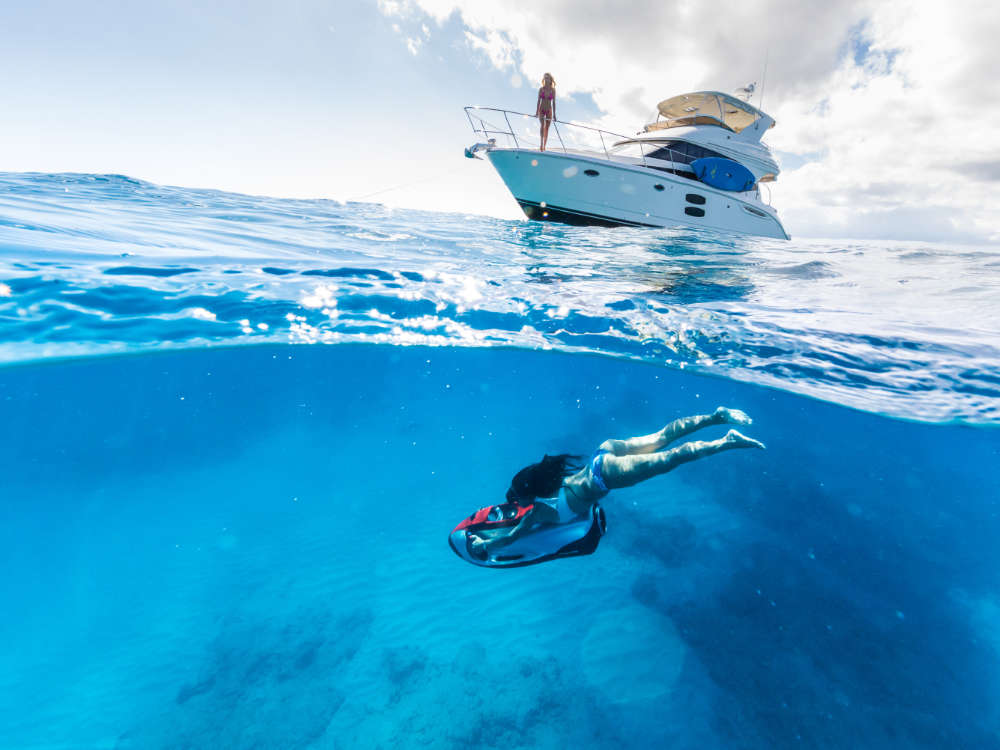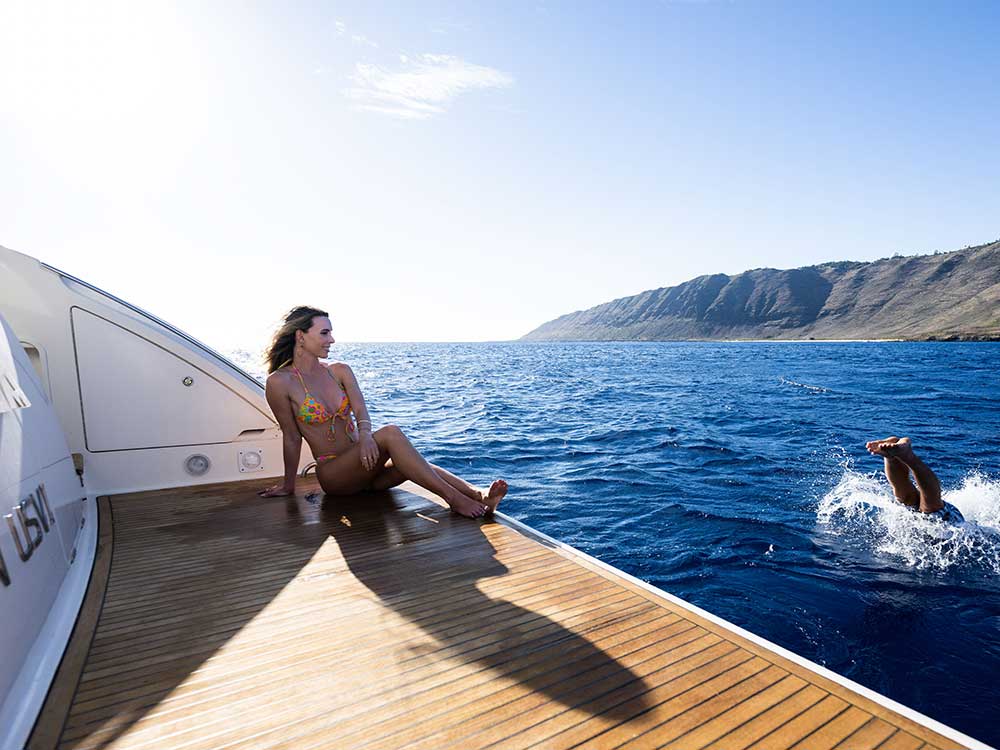The water is warming and the signs are all there: a new whale watching season is upon us! At Captain Bruce, we’re getting our vessels ready for the incredible spectacle of the annual humpback whale migration to Hawaiʻi. If you’re planning a trip to Oʻahu this winter and spring, this is an experience you won’t want to miss.
Here’s a quick guide to what you need to know about whale watching in paradise.

When and What Kind of Whales You’ll See
Hawaiʻi is a special place for North Pacific humpback whales, or koholā in Hawaiian. Every year, thousands of these magnificent creatures make the long journey from the cold feeding grounds of Alaska to the shallow, protected waters around the Hawaiian Islands to mate, give birth, and nurse their young.
When to Go
The official whale watching season in Hawaiʻi runs from December to May, with the peak of the activity occurring from January through March. While it’s possible to see the first arrivals in October and November, and the last stragglers as late as June, the winter and early spring months are when you’ll have the highest chance of a truly unforgettable encounter.
The Main Attraction
The star of the show is, without a doubt, the humpback whale. These “gentle giants” are known for their acrobatic displays, including breaching (leaping completely out of the water), pec slapping (hitting the surface with their long pectoral fins), and tail slapping. They are also famous for their hauntingly beautiful songs, which can be heard for miles underwater.
Beyond the Humpbacks
While humpbacks are the main attraction, Hawaiʻi’s waters are home to a diverse array of marine life. It’s possible to spot other species of toothed whales and dolphins, such as false killer whales, short-finned pilot whales, and melon-headed whales, who live here year-round.
Important Rules and Regulations to Know
Protecting these incredible marine mammals is a priority in Hawaiʻi. Both state and federal regulations are in place to ensure the safety of the whales and the people who come to see them. As a responsible tour operator, we strictly adhere to these rules.

- The 100-Yard Rule: The most critical regulation is the 100-yard rule. It is illegal for any vessel, kayaker, paddleboarder, or person in the water to approach a humpback whale within 100 yards (90 meters). This is for your safety and to prevent disturbing the animals’ natural behavior.
- A Whale’s Choice: While we are not allowed to approach them, whales are curious creatures. On rare occasions, a whale may choose to approach our boat. When this happens, we put our engines in neutral and simply enjoy the magical encounter. This is often called “getting mugged” by a whale, and it’s a truly humbling experience.
- Slow Down, Whales Below: During whale season, boat operators and private boaters are asked to remain vigilant and slow down. Collisions with whales can be dangerous for both the animal and the vessel. Our captains are trained to spot the signs of whales in the area, such as their “blows” (the puff of mist from their spout), and will adjust speed accordingly.
The Best Time of Day to Go
While whales don’t operate on a strict schedule, early morning and late afternoon tours can often be the best times for whale watching. The water is typically calmer and the lighting is perfect for photos. The whales also tend to be more active during these times of day, so you might witness more of those spectacular breaches and tail slaps.
* While we strive to provide the best whale-watching experience possible, sightings are not guaranteed.
Cruise in Waikiki

Select a destination for your activity in Hawaii

